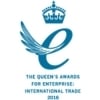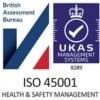High pressure die casting (HPDC) is a key process in modern manufacturing, enabling the production of complex and high-quality metal components.
The advances in HPDC have made a big impact on industries ranging from automotive to aerospace, ensuring the creation of robust and lightweight parts. Understanding these advances is crucial for appreciating the progress made in enhancing precision and efficiency in high pressure die casting.
The Evolution of High Pressure Die Casting
First developed in the mid-19th century, die casting has undergone big changes. The early processes were limited by the materials and technology of the era. However, with the advent of new alloys and technological improvements, HPDC has evolved into a sophisticated and highly efficient manufacturing process.
Today, HPDC is characterised by the use of advanced materials, new machinery, and precise control systems that ensure consistent quality and performance.
One of the most significant advancements in HPDC is the development of new materials and alloys. Traditional materials like aluminium and zinc have been enhanced by alloying with elements such as silicon, magnesium, and copper. These additions can improve the mechanical properties of the cast components, offering better strength, corrosion resistance, and thermal conductivity.
Modern diecasting alloys facilitate lighweighting of components and contribute to the efficiency of the manufacturing process. Aluminium-silicon alloys are most commonly used today for lightweight, high-strength applications, but there is a broad spectrum of specialist alloys available, each with its own advantages in terms of strength, durability, and potential for surface finishing.
Technological Advancements
New technology has revolutionised HPDC. Modern die casting machines are equipped with sophisticated control systems that enable precise regulation of parameters such as temperature, pressure, and injection speed. These systems ensure optimal conditions throughout the casting process, resulting in high-quality, repeatable production with minimal defects.
One notable tech advancement is real-time shot control, which makes immediate adjustments during the casting process. These systems use sensors and data analytics to monitor variables in real-time, ensuring the casting process remains within the desired parameters. This level of control significantly reduces the likelihood of defects and enhances overall efficiency.
Automation and Robotics
Automation and robotics have played a crucial role in advancing HPDC and increasing its cost-efficiency as a manufacturing method. The incorporation of robotic systems in die casting operations has streamlined the process, from mould preparation to component extraction. Robots enhance precision and repeatability, ensuring consistent quality across all produced components.
Furthermore, automation reduces the need for manual intervention, minimising the risk of human error and improving workplace safety.
Automated systems can handle the high temperatures and pressures involved in die casting, ensuring that the process remains efficient and safe for operators.
Sustainability and HPDC
In recent years, there has been a growing emphasis on sustainability in manufacturing processes, and HPDC is no exception. Innovation aimed at reducing energy consumption and minimising waste has been introduced, aligning with global sustainability goals. One approach is the use of more efficient melting furnaces that consume less energy and emit fewer greenhouse gases. Additionally, the recycling of scrap material has become a standard practice, reducing the overall environmental impact of the die casting process.
Advances in die design have contributed to sustainability efforts. By optimising the design of moulds, manufacturers can reduce the amount of material required for each component, minimising waste and enhancing resource efficiency. These sustainable practices not only benefit the environment but also contribute to cost savings and improved profitability for manufacturers.
Enhanced Design Capabilities
Advancements in computer-aided design (CAD) and simulation technologies have revolutionised the design phase of HPDC. Engineers can now create detailed 3D models and simulate the casting process before production begins. This capability allows the identification and correction of potential issues, ensuring the final design is fully optimised.
Simulation tools enable engineers to experiment with different design iterations and parameters, finding the optimal combination for the desired component characteristics. This level of precision in the design phase translates to higher quality and performance in the final product.
The Way Ahead
Automation and control systems will continue to develop. The power of computer simulation tools are also enabling foundry engineers to further push the boundaries of that the process can achieve.
Current design trends are creating demand for ever larger diecastings, enabling several legacy parts to be combined into a single component, a technique referred to as giga-casting.
Additive manufacturing techniques are also further enhancing the capabilities of HPDC, offering opportunities for ever more complex diecasting mould tools.
High pressure die casting has come a long way from its early days, thanks to a process of continual innovation which has significantly enhanced precision and efficiency. From the development of advanced materials and alloys to the integration of cutting-edge technology and automation, the progress in HPDC is evident across various industries. The focus on sustainability and enhanced design capabilities underscores the importance of continuous improvement in this field.
As the industry moves forward, so does MRT Castings. Our commitment to these new developments ensures we stay at the forefront of modern manufacturing doing what we do best: delivering high-quality components that meet the demands of an ever evolving industry.








